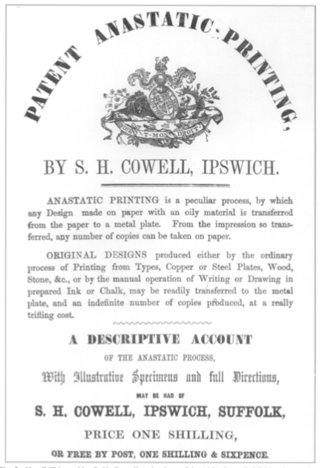Top Qs
Timeline
Chat
Perspective
Anastatic lithography
From Wikipedia, the free encyclopedia
Remove ads
Anastatic lithography is a method of printing developed by 1840 in Erfurt. [1] The technique provided a means for facsimile reproduction, which was developed and promoted by Werner and William Siemens. The reproduction of the four pages of the 25 September 1841 issue of The Athenaeum, a London scientific and literary journal, was so true to the original that it caused concerns expressed in an article "Printing and Piracy–New Discovery" which was published in the issue No. 736 published December 4, 1841.[2]

Remove ads
See also
References
Wikiwand - on
Seamless Wikipedia browsing. On steroids.
Remove ads
